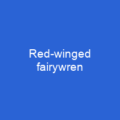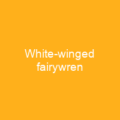The Enigmatic Letter-Winged Kite: A Rare Gem of Australia
Imagine a bird so rare that it’s almost like finding a hidden treasure in the vast landscapes of Australia. The letter-winged kite (Elanus scriptus) is one such enigma, with its unique appearance and fascinating behavior making it a true marvel of nature.
A Unique Look
With a wingspan that stretches from 84 to 100 centimeters, the letter-winged kite measures just 35 cm in length. Its plumage is a striking mix of pale grey and white, with prominent black rings around its red eyes. The most distinctive feature? A black underwing pattern resembling an ‘M’ or ‘W’, which makes it look like it’s wearing a stylish flight suit.
Life in the Wild
The letter-winged kite is not just a pretty face; it has a unique way of life. It begins breeding when rodent populations surge, nesting in loose colonies that can house up to 50 birds each. Can you imagine such a gathering? A bustling community of kites, all working together for the sake of their young!
During the breeding season, pairs lay three to four eggs, which are incubated for thirty days before the chicks fledge within five weeks. The kite is a nocturnal hunter, using its wings to hover above grasslands and fields to catch rodents. It’s like it has a radar system that can detect even the smallest movements on the ground.
Conservation Concerns
The letter-winged kite faces significant challenges due to the loss of food sources, which is why it’s rated as near threatened by the International Union for Conservation of Nature. This bird’s survival depends heavily on the availability of its primary prey, the long-haired rat.
Distinctive Features
Adult females weigh more than males but share similar plumage. The distinctive features include pale grey upperparts, white underparts, large deep-red eyes, and a striking black underwing pattern resembling an ‘M’ or ‘W’. Juveniles have white lower forehead and face markings with brownish orange bands across the chest.
Letter-winged kites soar with v-shaped wings, beating their wings more slowly than black-shouldered kites. They can hover motionless and flapping their wings. Distinguishing features include the ‘M’ or ‘W’ on the underside of its wing, lack of black wing tips, and a rasping call.
Distribution and Habitat
The distribution of this bird is quite specific, found in arid and semi-arid open country across Australia’s interior, particularly in South Australia and Queensland. Its habitat is dependent on food availability, with significant rainfall leading to rodent surges and kite population increases.
Vocalizations
The letter-winged kite’s vocalizations include chicken-like chirping or kacking calls, rasping calls, and loud whistles. The species is generally silent when alone but noisy when breeding or roosting at night. The kite typically hunts at night, foraging in areas of abundant or scarce prey during the day.
Nesting and Breeding
The letter-winged kite breeds in colonies of up to 50 pairs, often with multiple nests and broods at once. Aerial courtship displays involve mutual flight and rapid wing movements, followed by copulation. There is no set breeding season; instead, birds form nesting colonies in response to rodent irruptions.
Nests are built in small trees, lined with leaves and other materials, and typically contain 3-6 white eggs with red-brown blotches. During breeding, the female letter-winged kite broods young while the male brings food at night. The male also brings food to the female and joins her in catching prey as the brood grows.
Nestlings fledge around 32 days old and may be abandoned if food supply is low. Birds reach sexual maturity within their first year of age. The letter-winged kite hunts mainly after sunset, scanning the ground from 10-20m height before hovering up to 30m. Its principal prey is the long-haired rat, but it also hunts other rodents, such as rats and mice, and occasionally birds, beetles, and insects.
Letter-winged kites are hunted by black falcons and black kites, and their population is near threatened due to fluctuations in abundance. The species’ conservation status is difficult to assess due to its rarity and limited contact with people across most of its range.

The letter-winged kite is a true testament to the resilience and adaptability of nature. Its unique features, breeding habits, and conservation challenges make it a fascinating subject for both scientists and bird enthusiasts alike. As we continue to explore and understand this rare gem, let us also strive to protect its habitat and ensure that future generations can marvel at these magnificent birds.
You want to know more about Letter-winged kite?
This page is based on the article Letter-winged kite published in Wikipedia (retrieved on November 28, 2024) and was automatically summarized using artificial intelligence.







